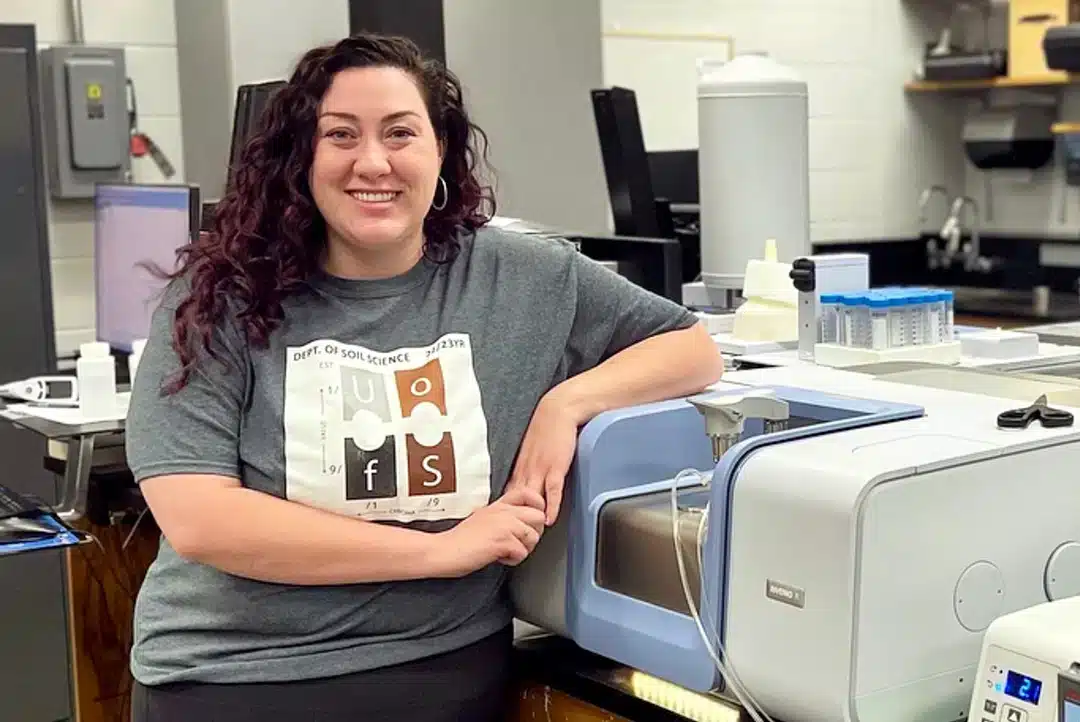new study is looking at how phosphorus reacts with mineral compounds and how these reactions can impact how well phosphorus is used in soil, a Sept. 27 news release from the University of Saskatchewan said.
“Phosphorus is a required nutrient for all living organisms, and its availability is controlled by adsorption processes,” Catherine Chavez, U of S master’s student, said in the release.
Adsorption describes a process where particles of one substance adhere to the surface of another. Chavez’s research project is exploring how a wide range of phosphorus compounds react with iron oxide minerals, the release said.
“Understanding this [outcome] is important to incorporate into the phosphorus cycle in the soil, as well as generally understanding the bioavailability, mobility, and fate of P in the environment,” she added.
Chavez noted that understanding these types of reactions can lead to better fertilizers and more efficient management of phosphorus already present in soil.
“Adsorption of phosphate compounds is not a new research topic,” Chavez said. “However, my flow through [a unique] spectroscopic experimental setup for the collection of real time adsorption data is quite novel.”
Under the supervision of College of Agriculture and Bioresources Department of Soil Science professor Derek Peak, Chavez is using Attenuated Total Reflectance Fourier Transform Infrared Spectroscopy to collect her experimental data, the release said. This type of spectroscopy uses infrared radiation to measure the amount and type of chemicals present in a sample.
After collecting results from the spectroscopy analysis, Chavez uses specialized software to conduct statistical analyses that bring insight into the relationship created when phosphates adhere to mineral surfaces.
Results have indicated that organic phosphate compounds adhere to minerals slower than polyphosphates and that the adsorption process takes place through two main mechanisms, the release said.
Chavez said pH affects how phosphate is adsorbed, and that if acidity levels are higher, phosphorus compounds tend to attach to mineral compounds faster. This information sheds light on how this interesting chemical relationship could be leveraged when developing soil fertility programs or new phosphorus fertilizers when designing sustainable sources of plant growth.
Her next plans for the experiment are to continue to examine the specifics of how these phosphate complexes form and how other factors might affect their formation, the release said.












